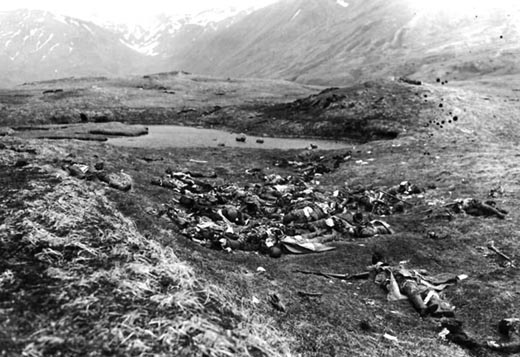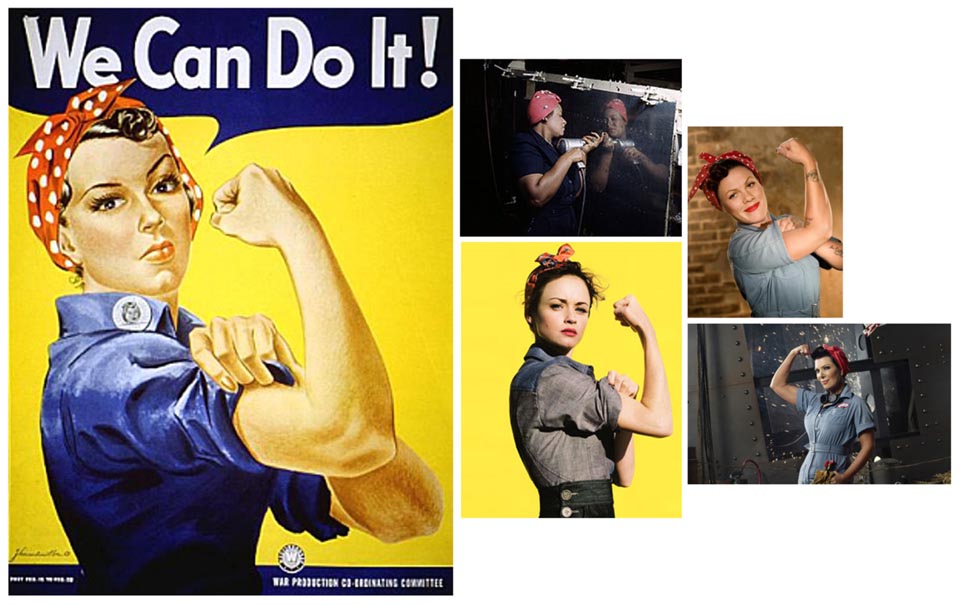Air Operations, Bismarcks
43rd Heavy Bomb Group B-17s, 90th Heavy Bomb Group B-24s, and V Bomber Command B-25s mount individual attacks against targets on New Britain.
[Air Operations, CBI
CHINAResponding to pleas from Chinese Army forces facing a massive Japanese Army ground offensive along the Yellow River, 9 308th Heavy Bomb Group B-24s temporarily based at the Hsinching airfield at Chengtu attack a supply area near the city of Ichang with 18 tons of bombs. Several of the B-24s are also equipped with remotely fired, fixed bomb-bay-mounted machine guns, which are used to blindly strafe ground targets during the bomb runs. Also, 4 23rd Fighter Group P-40s attack targets of opportunity around Lungling and Tengchung.
[Air Operations, East Indies
43rd Heavy Bomb Group B-17s, 90th Heavy Bomb Group B-24s, and V Bomber Command B-25s mount individual attacks against targets on Sumatra and Timor.
[Air Operations, Europe
BOMBER COMMANDDaylight Ops:
- 12 Venturas bomb the Caen airfield without a loss.
- 719 aircraft are sent to Wuppertal. In this total are 292 Lancasters, 185 Halifaxes, 118 Stirlings, 113 Wellingtons and 11 Mosquitos.
- This attack is aimed at the Barmen half of the long and narrow town of Wuppertal and becomes the outstanding success of the Battle of the Ruhr. Both Pathfinder marking and the Main Force bombing are remarkably accurate and a large fire develops in the narrow streets of the old center of the town. Because it is a Saturday night, many of the fire and air raid officials are not present, having gone to their country homes for the weekend. The fires services in the town are not able to contain the fires. About 80 percent of Barmen's built-up area is destroyed by the fires. 5 of the town's 6 largest factories are destroyed along with 211 other industrial sites and nearly 4,000 homes. 2,450 people are killed.
- The reaction of the Nazi leaders differs greatly. Hitler, despite requests from the Gauleiters of bomb-damaged cities, refuses to visit them to see for himself the extent of the damage (in Berlin he even arranges for his chauffeur to avoid bombed areas of the city while driving him around). Göring, who said that if the RAF ever raided Berlin 'you can call me Meier', makes fewer and fewer public appearances as civilian casualties mount.
- 10 Halifaxes, 8 Stirlings, 8 Wellingtons and 7 Lancasters are lost.
- 3 OTU aircraft sent to make leaflet flights over France are recalled.
FRANCE:
- At 1600 hours, against heavy opposition, 57 4th Heavy Bomb Wing B-17s attack the Rennes Naval Storage Depot with more that 132 tons of bombs.
- 6 B-17s are lost, 31 damaged; 1 crewman is killed, 10 wounded, 64 missiong
- Just after 1700 hours, 147 1st Heavy Bomb Wing B-17s attack the St.-Nazaire U-boat base with 277 2,000-pound bombs.
- 7 B-17s are downed by enemy fire, 1 crash-lands at sea, 59 damaged; 10 crewmen wounded, 71 missing
- 34 2nd Heavy Bomb Wing B-24s attack the La Pallice U-boat base with 99 2,000-pound bombs.
- There are no losses
- VIII Fighter Command send 131 P-47 escorts, but results are negligible due to the short range of the fighters. 1 Luftwaffe fighter is listed as a probable by a 56th Fighter Group P-47.
PANTELLERIA:
NASAF B-26s, P-38s, and P-40s and NATAF P-40s attack gun emplacements, a radar installation, and the town.
[Air Operations, New Guinea
- 43rd Heavy Bomb Group B-17s attack Alexishafen and Madang.
- 43rd Heavy Bomb Group B-17s, 90th Heavy Bomb Group B-24s, and V Bomber Command B-25s mount individual attacks against Finschhafen, Nabire, and Saidor.
Air Operations, Sardinia
P-38 fighter bombers attack the Porto Ponte Romano.
[Aleutians
On Attu the Japanese mount a final fanatical attack on the Americans who are now established in Chichagof. The fighting is extremely vicious and continues all day and during the following night.
Dead Japanese Soldiers |
 |
China
The Chinese recapture Yuyangkwan, east of Ichang. Chinese Nationalist troops in the Ichang area halt the Japanese advance on Chungking. They promptly went of the offensive.
[Pacific
- The Japanese submarine RO-107 is sunk by the US submarine chaser SC-669 off the New Hebrides Islands.
- The US submarine Gar (SS-206) sinks the Japanese gunboat Aso Maru southeast of Cayagan, Sulu Sea.
- The US submarine Scamp sinks the Japanese seaplane carrier Kamikawa Maru (6853t) north of Kavieng, New Ireland.
- The US submarine Tambor sinks the Jaanese merchant cargo ship Eisho Maru (2486t) in the South China Sea about 60 miles southeast of Hainan Island.
United States, Home Front
|
|
Rockwell’s depiction of Rosie represents one of two ways that she was typically depicted. Deborah Felder explains that Rosie was either depicted in this rather unfeminine and muscular manner, like the Rockwell image, or as a more traditional feminine character wearing more form fitting cover-alls. Rockwell’s image, clearly, is a masculine depiction. James J. Kimble and Lester C. Olson describe in their essay outlining the history and several depictions of Rosie the Riveter, that the various details of Rockwell’s depiction “suggest gender ambiguities and violations insofar as they tended to be masculine attributes…”(33) The article also explores the connection, made by other writers as well, between the composition of Rockwell’s Rosie to that of Michelangelo’s portrayal of the prophet Isaiah in the Sistine Chapel. This reference “… may tacitly reinforce the print’s masculinity and its righteousness.”
One example of a more conventionally feminine Rosie, and among the most well known depictions, is by J. Howard Miller, entitled We can Do it!. (Figure 14) While this woman, like Rockwell’s Rosie, is exhibiting her physical strength by flexing her arm, and she appears ready to work, she is at the same time a much more feminine depiction than Rockwell’s. Felder states that the media “preferred to highlight the more feminine qualities of American’s Rosies.”(35) She continues to suggest that these more conventional feminine Riveters emphasized that “she was a housewife and mother at heart, who would (and should) gladly return to her rightful place in the home at the first opportunity.” (36) The realization that magazines could “equate consumerism with patriotism,” led to advertisements, such as Eureka Vacuums making use of Rosie characters. (37) Kimble and Olson note the similarities and differences between these two images in their essay. One important difference is in the feminine appearance of Miller’s Rosie. “Cosmetics affirm her femininity, including mascara, eyebrow liner, a hint of lipstick, and fingernail polish on one well- manicured fingernail.”(38) Furthermore, the tools that she would use are not present in her portrait, unlike the riveter included in Rockwell’s.
Kimble and Olson suggest that Rockwell’s image had an impact on many women, not just those in the working class. Rockwell’s Rosie the Riveter would have changed the views of wealthier women, for example, by gaining their approval of the female workers, and even prompt them to “avidly support their decisions concerning their public performances of womanhood.”
[
